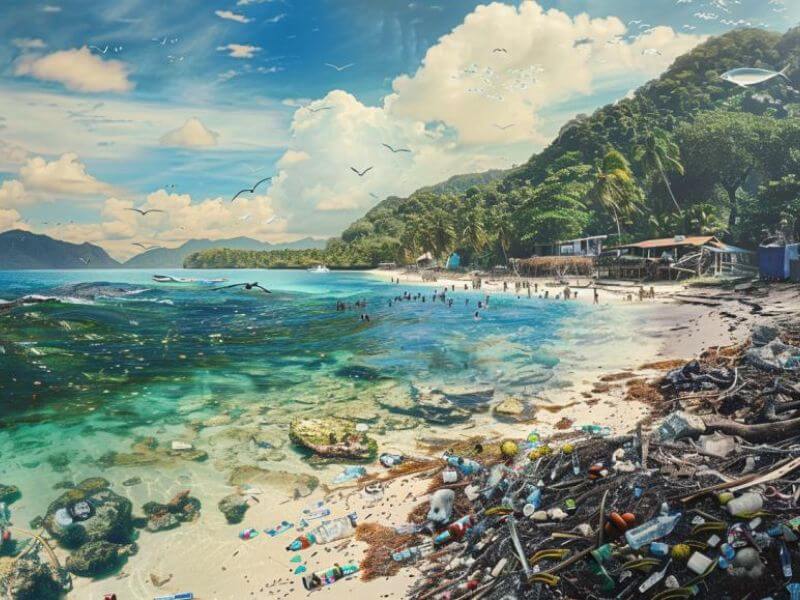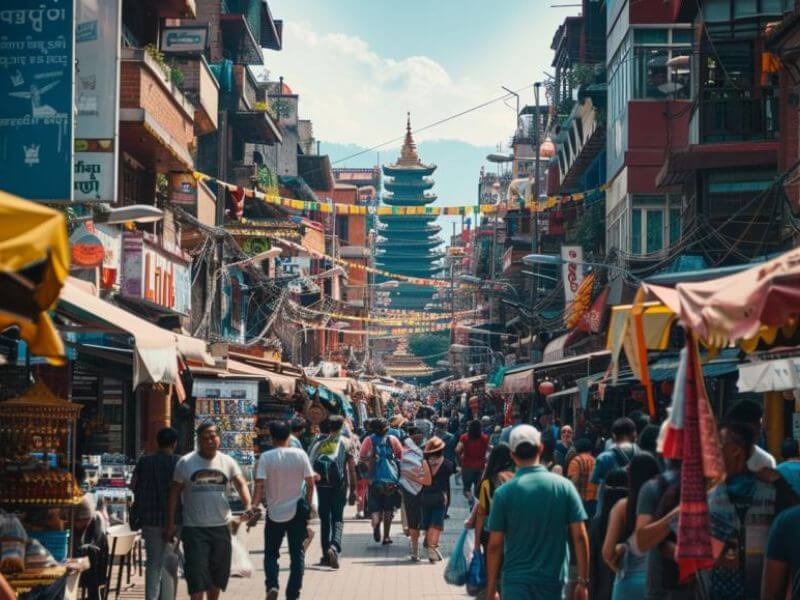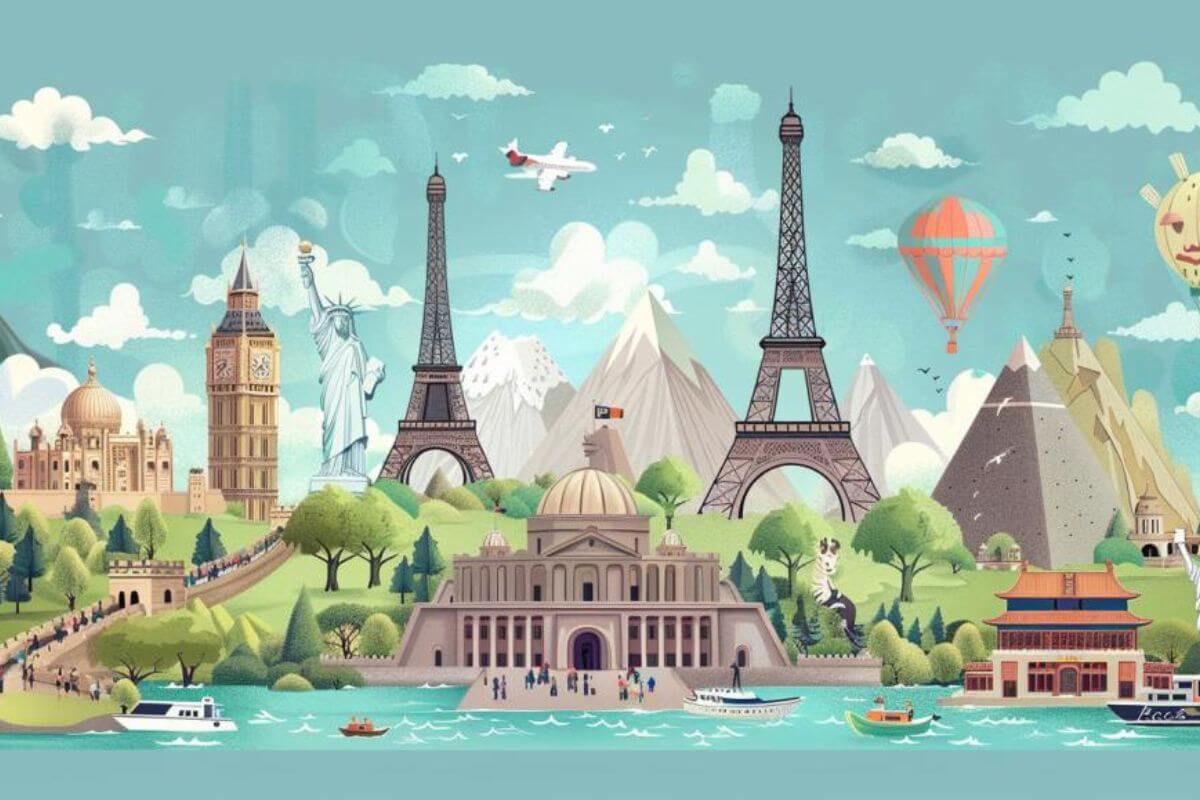Must-See Places Revealed: the Shocking Truth About Tourist Hotspots
Tourist hotspots like Venice and Barcelona aren’t just perfect selfies—they’re facing real problems. Heavy tourism pressures local economies, strains infrastructure, and causes environmental damage. You’ll see heritage sites eroded, pollution surging, and traditional cultures fading. Governments are stepping in with visitor caps and higher fees, while locals push for eco-friendly practices to curb the damage. It’s startling to discover the hidden cost of your dream vacation to places like Boracay or Mount Everest. Curious about the lasting impacts and how you can travel more responsibly? There’s a lot more to uncover.
Key Takeaways
- Overtourism in Venice and Barcelona leads to heritage loss and economic repercussions.
- Tourist hotspots like Boracay face severe environmental degradation and waste management challenges.
- Traditional dances and local customs are altered due to cultural erosion from overtourism.
- Iconic sites such as Mount Everest suffer from excessive foot traffic and pollution.
- Sustainable tourism measures, including visitor caps and off-peak travel promotion, are essential to protect these destinations.
Impact of Overtourism
In recent years, overtourism has wreaked havoc on some of the world’s most cherished destinations, leading to serious consequences for both the environment and local communities. This influx of visitors brings economic repercussions through overcrowding, making daily life a challenge for residents. Cities like Venice and Barcelona are prime examples where resident displacement and heritage loss are becoming all too common.
With so many tourists flocking to these hotspots, infrastructure strain is inevitable. Roads, public transportation, and basic utilities buckle under the pressure. Governments are left with no choice but to introduce visitor caps and other measures to manage the flow. For instance, U.S. National Parks are considering timed entry systems to spread out visitors and lessen the burden on popular sites.
Local communities are often the first to feel the pinch of overtourism. Environmental degradation isn’t just an abstract concept; it translates to polluted beaches, damaged ecosystems, and a loss of cultural heritage. However, in response, many places are ramping up sustainability efforts. Bali, for example, is reevaluating laws for tourists to protect sacred sites and manage the garbage emergency.
Environmental Consequences
Tourist hotspots aren’t only struggling with overcrowding but are also facing severe environmental degradation. The sheer number of visitors leads to skyrocketing pollution levels and overwhelming waste management challenges, especially in places like Boracay, Philippines. You’ve probably seen the beautiful beaches, but did you know they’re struggling with piles of trash left behind by tourists?

In response, destinations like Angkor Wat, Cambodia, have introduced visitor caps and doubled ticket prices to manage the influx and protect the ancient ruins. These measures are essential to preserving these iconic sites for future explorers like you.
Governments have also stepped in with strict regulations to safeguard endangered heritage areas. Take the Galapagos Islands, for instance. With around 9,000 unique species, the Ecuadorian government has enforced stringent land and ship-based tourism controls to shield this fragile ecosystem.
Venice, Italy, is considering bans on cruise ships and restrictions on tourists to save the sinking city and its local culture. Environmental damage isn’t just limited to land; coral reefs, like those around Khao Phing Kan, Thailand, suffer from overcrowding, highlighting the need for eco-conscious travel.
Your freedom to explore must come with responsibility to protect these treasures.
Cultural Erosion

The surge of tourists often overwhelms local traditions and customs, diluting the authentic cultural experience you seek. As popularity grows, the unique cultural authenticity of destinations starts to fade. Traditional customs give way to commercialized versions designed to cater to the masses. Local displacement becomes a harsh reality as native populations are pushed out to make room for tourist infrastructure. This not only disrupts community life but also erodes the cultural fabric that makes a place special.
| Impact | Example | Consequence |
|---|---|---|
| Cultural Erosion | Traditional dances altered | Loss of cultural authenticity |
| Local Displacement | Communities relocated | Disconnection from heritage |
| Commercialization | Souvenir shops replace markets | Dilution of local flavor |
| Overcrowding | Festivals overcrowded | Stressed local customs |
Preserving cultural authenticity is crucial for authentic visitor experiences. Without it, the charm and essence of a destination are lost. Cultural preservation efforts often struggle under the weight of tourist numbers, making it difficult to maintain traditional customs. As a traveler who values freedom and genuine experiences, you’re facing a landscape where cultural erosion is a growing concern. Seek out ways to engage responsibly and support the preservation of the original culture and heritage of the places you visit.
Sustainable Tourism Measures
Many destinations are implementing sustainable tourism measures to tackle the challenges of overcrowding, environmental damage, and cultural erosion. You, as a traveler, have the power to make a difference.
Places like Machu Picchu and Santorini are now introducing visitor caps and promoting off-peak travel to manage the flow of tourists better. This not only helps in conservation efforts but also makes for a more enjoyable experience without the crowds.

Community involvement is key. By supporting locals, you contribute directly to the local economy and help in cultural preservation. Opt for local guides, eat at family-owned restaurants, and purchase souvenirs from artisans.
Waste management is another vital aspect. Responsible travel means minimizing your waste and respecting natural resource conservation. Carry reusable water bottles, avoid single-use plastics, and participate in clean-up drives if you can.
Sustainable practices aren’t just about the environment; they’re about respecting and preserving the culture and heritage of the places you visit. Engage in responsible travel by learning about local customs and traditions.
Your conscious choices can have a significant impact on the efforts toward sustainable tourism, ensuring these beautiful destinations remain unspoiled for future generations.
Iconic Sites Under Threat
As you explore iconic sites like Venice and Mount Everest, you’ll quickly notice the vital impact of overtourism and environmental damage. These breathtaking destinations are now grappling with significant conservation challenges. Excessive foot traffic erodes natural landscapes, while pollution mars the beauty of these places.

Visitor management has become an essential issue, with authorities struggling to balance the influx of tourists against the need to protect these fragile environments.
The economic impacts of overtourism are also worth noting. While tourism brings revenue, it often leads to rising prices and living costs, making life harder for locals. Infrastructure strain is another serious concern. Historic cities like Venice face crumbling foundations due to the constant flow of tourists, and the trails of Mount Everest are littered with waste.
Local perspectives are increasingly vocal about these issues. Residents of popular hotspots frequently express frustration over the loss of cultural integrity and the challenges of living in a tourist-dominated economy.
To guarantee these iconic sites can be enjoyed by future generations, sustainable practices and effective visitor management are vital. It’s important to strike a balance that respects both the environment and local communities.
Frequently Asked Questions
Are the Main Locations That the Tourist Want to Reach to Satisfy Their Purpose for Travel?
You’re often drawn to hidden gems, local cuisine, cultural festivals, scenic routes, and historical landmarks. These authentic experiences satisfy your travel purpose, offering freedom and a deeper connection to the places you visit.
What Is the Most Visited Spot in the World?
You’re probably wondering what the most visited spot in the world is. It’s the Eiffel Tower, surpassing the Great Wall, Statue of Liberty, Vatican City, and Times Square with over 7 million visitors annually.
What Does the Tourist Generally Expect From a Tourist Spot?
You expect local cuisine, cultural festivals, and hidden gems when visiting tourist spots. You want guided tours, but also the freedom to explore on your own. Souvenir shops are a must for capturing memories and unique experiences.
What Is the Meaning of Tourist Hotspot?
A tourist hotspot is a destination attracting many visitors. You’ll experience local cuisine, cultural festivals, seasonal events, hidden gems, and historical landmarks. These places offer rich experiences but often struggle with overcrowding and sustainability issues.
Conclusion
As a traveler, you’ve got the power to make a difference. By understanding the impact of overtourism, you can take steps to preserve the beauty and integrity of iconic destinations. Choose sustainable tourism practices, respect local cultures, and support conservation efforts.
Your responsible actions guarantee these wonders remain for future generations to enjoy. So, travel wisely and let’s keep these must-see places as breathtaking as they’ve always been.







